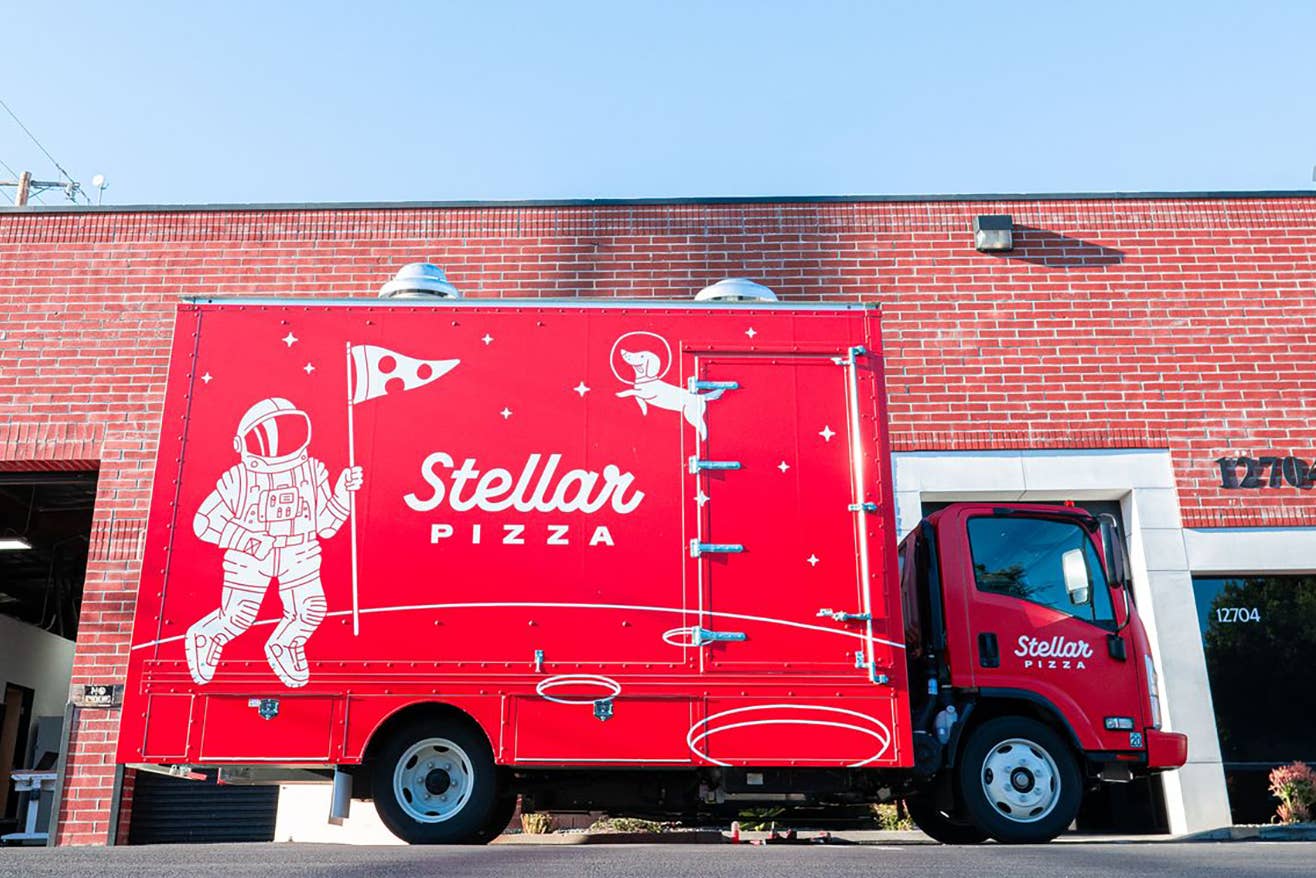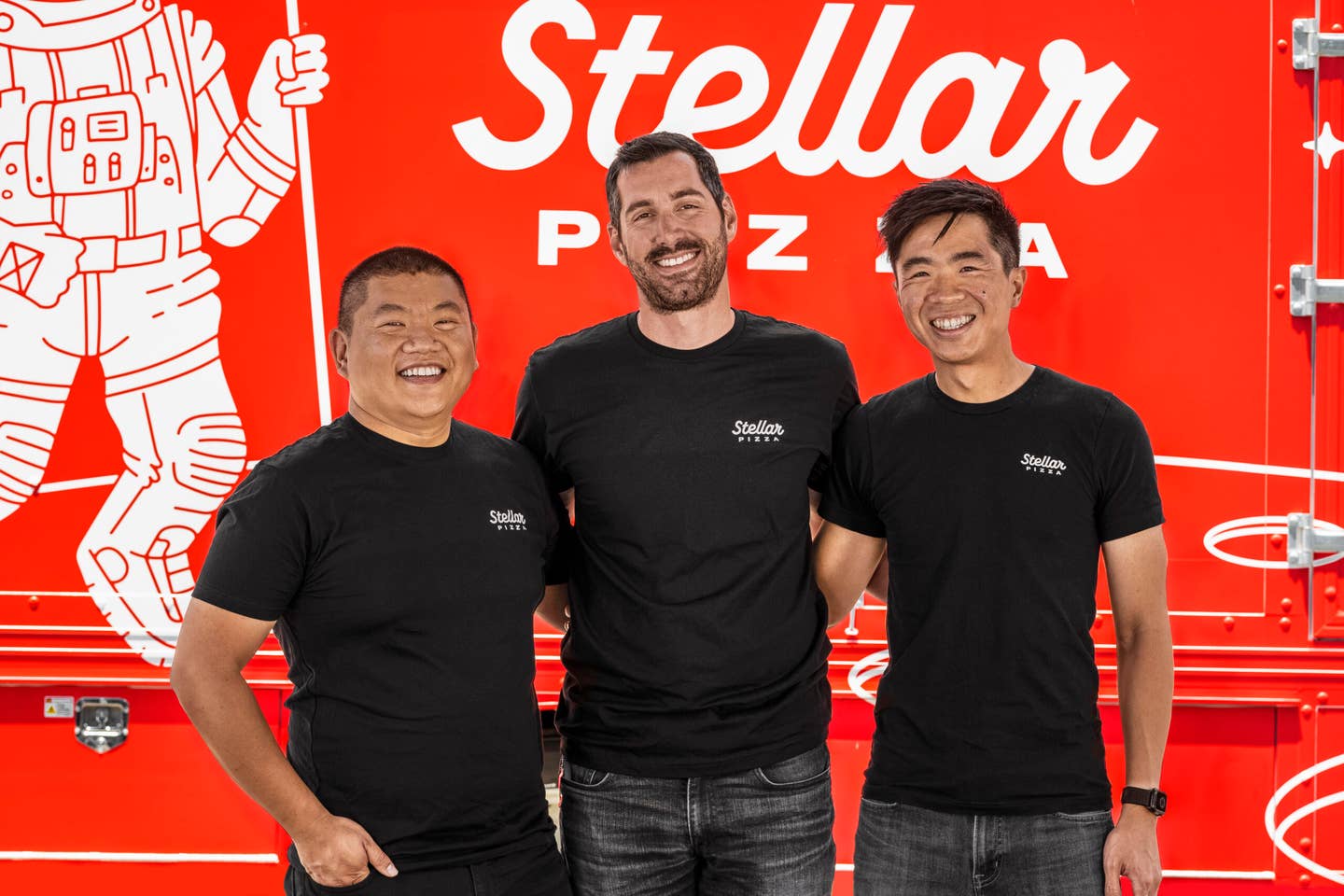
Your Next Pizza Delivery Might Come From a Former SpaceX Chef—By Way of Robots
But can a machine knead dough like a nonna?
You wouldn’t think space exploration would have any influence on how a margherita pie is made, but a new Los Angeles company is drawing that far-out connection.
Launching later this summer, Stellar Pizza hasn’t been shy about advertising its non-earthbound connections: last year, the start-up hired Ted Cizma, a Chicago-born chef who previously worked for Elon Musk to feed 12,000 SpaceX employees. (Now, Stellar Pizza counts numerous SpaceX alumni, including 24 former engineers, among its staff.) But while Cizma, who calls himself the Rocket Chef, might be in charge of coming up with the company’s recipes, his creations won’t be made with human hands.
In a press release, the founders of Stellar Pizza announced that the company has invented a truck manned entirely by machines (with the exception of old-fashioned human drivers) that can “deliver a larger quantity of fresh, made-to-order pizzas” perfectly timed to arrive at the homes of pie-hungry customers.

Though the pizza purveyor on wheels might be the most ostentatious robotic food company to tout its futuristic tech connections (an astronaut theme permeates the website), it is hardly the first. Since the mid-2010s, companies and entrepreneurs have toyed with the (controversial) idea of replacing food workers with machines, but have mostly kept the automation confined to front of house. Now, a growing number of companies are getting robots involved in the culinary arts—particularly when it comes to pizza.
Earlier this month, Nala Robotics, an Illinois-based tech company specializing in artificial intelligence, announced its latest product: Pizzaiola, a voice-controlled and fully automated commercial kitchen with technology that can serve up not just its namesake food but also burgers, wings, pastas, and salads.
According to Cizma, these kinds of changes are a reflection of the current reality: “The combination of fractured supply chains, rising labor and food costs, as well as consumers’ increasing desire to obtain meals on their own terms, will drive the growth and development of technologically advanced food making machines and equipment.”
While sci-fi writers have long imagined that robots would one day handle the day-to-day drudgery of preparing and serving what we eat, the ramifications have often been imagined as a Star Trek-esque utopia or a Hitchhiker’s Guide to the Galaxy farce. But for restaurant workers, the notion of machines taking over the kitchen has been a simmering threat. In 2018, nearly 50,000 Las Vegas food workers threatened to strike in a move partially inspired by fears they would be replaced. A 2020 survey published in the Journal of Hospitality & Tourism Research found that respondents were generally concerned about the societal implications that food-service robots would have for workers.
Now, as the industry is undergoing a major overhaul—with COVID-19 serving as a catalyst—the future is unclear when it comes to machines entering the food space. For Cizma, it’s a matter of adapting to the moment: “The pandemic has impacted the hospitality workforce to such an extent that I believe it is irreversibly changed. Operators will need to embrace technology not just to succeed, but to survive.”
Keep Reading
Continue to Next Story










